Don't wanna be here? Send us removal request.
Text
Have movies changed dramatically since 1965? (Film Final) By Jacob Christopher

Film has evolved a lot since the 60s, however if one aspect of film’s history stayed true to itself it’s the new wave’s capability to avert expectations and challenge the norms of cinema. Movies have always been dynamic since it’s early predecessors of studio movies, however the birth of New Wave cinema is the years of the 1950s and early 60s emerging as the French New Wave, grabbed the narrative and placed it within the hands of the director. Such as an author to a book, the vision of a film should be the personal reflection of a individual’s story.
Where many characteristics that may be observed in the production are smaller budgets and unconventional cinematography choices. Along with the innovative directors such as Agnes Verada, Francois Truffaut and the director of A Bout De Souffle, Jean Luc Goddard. The idea became popular, for a director using their camera as a writer’s pen is seen exemplified in the handheld techniques instrumented in their film. Presenting more of a documentary-like form of filming, utilizing as much natural lighting as possible, as well as the following of characters on screen. Many of the innovations within this period are still seen throughout many of the directing choices utilized in modern independent films.
The Impact of New Wave Cinema
France emerged from World War II in the 1960s, rebuilding the country physically and the nation's national identity through the French Fifth Republic. Under the leadership of President Charles de Gaulle. New Wave Cinema, or "Nouvelle Vague," emerged in France in the late 1950s and 1960s, revolutionizing the film industry with its innovative techniques and storytelling. This movement was characterized by smaller budgets, unconventional cinematography, and innovative narrative structures that challenge traditional filmmaking norms and paving the way for future avant-garde cinema. Often worked with limited financial resources, leading to a more spontaneous and creative approach to filmmaking. This constraint encouraged the use of real locations, natural lighting, and non-professional actors, which contributed to the authenticity and rawness of the films. Techniques such as handheld camera work, natural lighting, and innovative angles were used to create a sense of immediacy and realism. These methods broke away from the polished look of mainstream cinema, bringing a fresh, dynamic visual style to the screen. Focusing on character development and emotional depth, prioritizing personal and psychological experiences over coherent story arcs. Jean Luc Godard's A Bout de Souffle (Breathless) is an iconic New Wave film, exemplifying the movement's groundbreaking techniques and themes. Godard employs jump cuts to disrupt the narrative flow and create a sense of disorientation and immediacy. This technique defies the classical continuity in editing, drawing attention to the deconstructed nature of it’s cinema.

Exemplified in the scene of Michel killing the cop, the camera pans up close to Michel, shows the gun, the cop keeling over, then Michel running away. A scene that is captured in 5 shots within 15 seconds, Goddard has broken the action to it’s barest of essence and robs Michel of any glory.
Social and Political Contextualization in Film

“Of course, Head is an utterly and totally fragmented film. Among other reasons for making it was that I thought I would never get to make another movie, so I might as well make 50 to start out with and put them all in the same feature." - Bob Rafelson
Released in 1968 Head is a film celebrated not for its plot, but for its lack thereof. Released alongside a corresponding album, the film showcases The Monkees navigating a series of hijinks on their movie set, enveloped in a surrealist narrative. The film employs a satirical, tongue-in-cheek approach to its humor and messaging, expressed through its dialogue and formalistic technique cinematography. The Monkees, Hollywood’s TV answer to The Beatles, blurred the lines between actors and musicians, rising to fame from the mid-sixties to 1967. Head is a film that should be seen through the lens of its social and political contexts, examining how it addresses issues of gender, race, social class, and equality.
Head serves as a medium for social and political commentary, using its disjointed narrative to reflect the disillusionment and unrest of the late 60s. The film's satirical tone critiques the media, the entertainment industry, and the political establishment of the time, making it a subversive piece of art. Head addresses class issues subtly, critiquing the consumerism and artificiality of Hollywood and the music industry. The Monkees, as a manufactured band and brand, symbolize the commodification of art and the superficiality of fame.
Released during a period of significant social protest, the Vietnam War and civil rights movement profoundly affected American society. The film's chaotic style and fragmented narrative can reflect the contemporary sense of confusion and upheaval, making it a time capsule of 1968’s cultural and political landscape. The inclusion of real footage of the execution of Nguyễn Văn Lém, grounds the film in the tumultuous reality of its time. These shocking images juxtaposed with the Monkees’ antics create a jarring contrast that forces the audience to confront the harsh truths of the era.

The 90’s Film Genres and Styles
The 1994 Hong Kong electoral reform was a set of significant constitutional changes in the last years of British colonial rule in Hong Kong before the handover of its sovereignty to the People's Republic of China
Wong Kar-Wai’s auteur philosophy is deeply rooted in his approach to storytelling and visual aesthetics. He often collaborates with cinematographer Christopher Doyle, whose innovative use of color and composition enhances the emotional depth and visual impact of Wong’s films. Together they create a cinematic language that is both visually stunning and thematically rich, allowing the audience to experience the characters’ emotions and the city’s atmosphere in a visceral way.

In Chungking Express, Wong Kar-Wai’s focus on character driven narratives and the exploration of existential themes sets him apart as an auteur. His films often eschew traditional plot structures in favor of a more impressionistic approach, capturing the rhythms and nuances of everyday life. This philosophy aligns with the principles of the New Wave movement, which prioritizes artistic expression and innovation over commercial considerations.
Despite the innovative and avant-garde approach of Chungking Express, certain conservative elements persist within its genre and storytelling techniques. The film retains a focus on universal themes of love and heartbreak, which have been central to storytelling across cultures and eras. These themes provide a sense of familiarity and emotional resonance for audiences, grounding the film’s more experimental aspects in relatable human experiences.
Furthermore, Wong Kar-Wai’s use of romantic melodrama and noir elements ties Chungking Express to traditional genres while reinterpreting them through a contemporary lens. The film’s emphasis on visual style and mood over plot driven narratives echoes classic noir films, yet it subverts genre conventions by infusing them with a modern sensibility and a unique cultural context.
The Modern influences of New Wave cinema exemplified through Tangerine (2015)

Sean Baker's 2015 film Tangerine is a modern exemplar of New Wave cinema, demonstrating how innovative techniques and bold storytelling can create a significant cultural impact. Utilizing a estimated budget of $100,000 and grossing approximately $924,793 worldwide, Tangerine stands out not only for its financial success but also for its groundbreaking use of technology and its commitment to authentic representation. At its core, Tangerine is a film deeply engaged with social issues, particularly those faced by the transgender community. By casting transgender actresses Kitana Kiki Rodriguez and Mya Taylor in leading roles, the film brought much-needed visibility and authenticity to transgender representation in cinema. The narrative, focusing on friendship, identity, and survival, offers a poignant and often humorous look at the struggles and resilience of minorities in urban environments. This focus on authentic representation contributed to the broader cultural shift towards inclusivity in media.
At its core, Tangerine is a film deeply engaged with social issues, particularly those faced by the transgender community. By casting transgender actresses Kitana Kiki Rodriguez and Mya Taylor in leading roles, the film brought much needed visibility and authenticity to transgender representation in cinema. The narrative, focusing on friendship, identity, and survival, offers a poignant and in humorous tone, looks at the struggles and resilience of minorities in urban environments. This focus on authentic representation contributed to the broader cultural shift towards inclusivity in media.
Tangerine was widely praised for its performances, direction, and innovative production techniques. Released at a time when conversations around transgender representation in media were gaining prominence, the film played a crucial role in advancing these discussions. Its success earned numerous awards and accolades, highlighting the importance of diverse voices in cinema. Furthermore, Tangerine demonstrated the potential of technology to democratize the filmmaking process, inspiring a new generation of filmmakers to embrace innovative and accessible methods.
Critical Resources
Tangerine Critical Resource
Within this dissertation by Paula Lopez, we examine the impact of two films that include transgender representation within their lens, one being Tangerine, giving visibility to the transgender community
Chungking Express Critical Resource
This essay explores the pivotal roles that film festivals such as the ones in Berlin, Venice and New York. Where the evidence becomes relevant to my film is the evidence of Quintin Tarantino's crucial role in helping to distribute Chungking Express to the United States movie market.
Head Critical Resource
In this text we revisit the cultural relics of members from The Monkees, where at the pinnacle of their careers they destroyed it to the best of their abilities. Discussing the legacy and impact of the 1968 film Head on The Monkees, highlighting conflicting emotions among band members decades later.
A Bout de Souffle
This article focuses on a specific, pivotal six-second shot from Jean-Luc Godard's film A Bout de Souffle, examining its intertextual significance. The shot occurs towards the end of the film, where the protagonist Michel Poiccard, played by Jean-Paul Belmondo, is seen scrutinizing a pile of books in a room with Patricia. The scene is filmed from Michel's point of view, with Mozart playing on a record player in the background. The camera zooms in on a book cover that provides crucial information: it's Maurice Sachs' novel Abracadabra, featuring a Lenin quote on a promotional band: "Nous sommes des morts en permission" (We are dead men on leave). The article delves into the implications of this shot within the film's narrative and its broader thematic and intertextual contexts.
Final Thoughts
Reflecting on these films, it’s evident that cinema continues to balance innovation with tradition, responding to and shaping cultural and societal norms. From the groundbreaking techniques of the New Wave to the modern influences seen in films like Tangerine, filmmakers challenge conventions and push boundaries, ensuring that cinema remains a dynamic and evolving art form.
Links to other students
Cris Nye Reservoir Dogs/ Tangerine Comparison
Carly Leavitt-Hullana Twin Peaks/ Chungking Express Comparison
Riley Goodale A Hard's Day Night Film Essay
5 notes
·
View notes
Text
Have movies changed dramatically since 1965? (Film Final) By Jacob Christopher

Film has evolved a lot since the 60s, however if one aspect of film’s history stayed true to itself it’s the new wave’s capability to avert expectations and challenge the norms of cinema. Movies have always been dynamic since it’s early predecessors of studio movies, however the birth of New Wave cinema is the years of the 1950s and early 60s emerging as the French New Wave, grabbed the narrative and placed it within the hands of the director. Such as an author to a book, the vision of a film should be the personal reflection of a individual’s story.
Where many characteristics that may be observed in the production are smaller budgets and unconventional cinematography choices. Along with the innovative directors such as Agnes Verada, Francois Truffaut and the director of A Bout De Souffle, Jean Luc Goddard. The idea became popular, for a director using their camera as a writer’s pen is seen exemplified in the handheld techniques instrumented in their film. Presenting more of a documentary-like form of filming, utilizing as much natural lighting as possible, as well as the following of characters on screen. Many of the innovations within this period are still seen throughout many of the directing choices utilized in modern independent films.
The Impact of New Wave Cinema
France emerged from World War II in the 1960s, rebuilding the country physically and the nation's national identity through the French Fifth Republic. Under the leadership of President Charles de Gaulle. New Wave Cinema, or "Nouvelle Vague," emerged in France in the late 1950s and 1960s, revolutionizing the film industry with its innovative techniques and storytelling. This movement was characterized by smaller budgets, unconventional cinematography, and innovative narrative structures that challenge traditional filmmaking norms and paving the way for future avant-garde cinema. Often worked with limited financial resources, leading to a more spontaneous and creative approach to filmmaking. This constraint encouraged the use of real locations, natural lighting, and non-professional actors, which contributed to the authenticity and rawness of the films. Techniques such as handheld camera work, natural lighting, and innovative angles were used to create a sense of immediacy and realism. These methods broke away from the polished look of mainstream cinema, bringing a fresh, dynamic visual style to the screen. Focusing on character development and emotional depth, prioritizing personal and psychological experiences over coherent story arcs. Jean Luc Godard's A Bout de Souffle (Breathless) is an iconic New Wave film, exemplifying the movement's groundbreaking techniques and themes. Godard employs jump cuts to disrupt the narrative flow and create a sense of disorientation and immediacy. This technique defies the classical continuity in editing, drawing attention to the deconstructed nature of it’s cinema.

Exemplified in the scene of Michel killing the cop, the camera pans up close to Michel, shows the gun, the cop keeling over, then Michel running away. A scene that is captured in 5 shots within 15 seconds, Goddard has broken the action to it’s barest of essence and robs Michel of any glory.
Social and Political Contextualization in Film

“Of course, Head is an utterly and totally fragmented film. Among other reasons for making it was that I thought I would never get to make another movie, so I might as well make 50 to start out with and put them all in the same feature." - Bob Rafelson
Released in 1968 Head is a film celebrated not for its plot, but for its lack thereof. Released alongside a corresponding album, the film showcases The Monkees navigating a series of hijinks on their movie set, enveloped in a surrealist narrative. The film employs a satirical, tongue-in-cheek approach to its humor and messaging, expressed through its dialogue and formalistic technique cinematography. The Monkees, Hollywood’s TV answer to The Beatles, blurred the lines between actors and musicians, rising to fame from the mid-sixties to 1967. Head is a film that should be seen through the lens of its social and political contexts, examining how it addresses issues of gender, race, social class, and equality.
Head serves as a medium for social and political commentary, using its disjointed narrative to reflect the disillusionment and unrest of the late 60s. The film's satirical tone critiques the media, the entertainment industry, and the political establishment of the time, making it a subversive piece of art. Head addresses class issues subtly, critiquing the consumerism and artificiality of Hollywood and the music industry. The Monkees, as a manufactured band and brand, symbolize the commodification of art and the superficiality of fame.
Released during a period of significant social protest, the Vietnam War and civil rights movement profoundly affected American society. The film's chaotic style and fragmented narrative can reflect the contemporary sense of confusion and upheaval, making it a time capsule of 1968’s cultural and political landscape. The inclusion of real footage of the execution of Nguyễn Văn Lém, grounds the film in the tumultuous reality of its time. These shocking images juxtaposed with the Monkees’ antics create a jarring contrast that forces the audience to confront the harsh truths of the era.

The 90’s Film Genres and Styles
The 1994 Hong Kong electoral reform was a set of significant constitutional changes in the last years of British colonial rule in Hong Kong before the handover of its sovereignty to the People's Republic of China
Wong Kar-Wai’s auteur philosophy is deeply rooted in his approach to storytelling and visual aesthetics. He often collaborates with cinematographer Christopher Doyle, whose innovative use of color and composition enhances the emotional depth and visual impact of Wong’s films. Together they create a cinematic language that is both visually stunning and thematically rich, allowing the audience to experience the characters’ emotions and the city’s atmosphere in a visceral way.

In Chungking Express, Wong Kar-Wai’s focus on character driven narratives and the exploration of existential themes sets him apart as an auteur. His films often eschew traditional plot structures in favor of a more impressionistic approach, capturing the rhythms and nuances of everyday life. This philosophy aligns with the principles of the New Wave movement, which prioritizes artistic expression and innovation over commercial considerations.
Despite the innovative and avant-garde approach of Chungking Express, certain conservative elements persist within its genre and storytelling techniques. The film retains a focus on universal themes of love and heartbreak, which have been central to storytelling across cultures and eras. These themes provide a sense of familiarity and emotional resonance for audiences, grounding the film’s more experimental aspects in relatable human experiences.
Furthermore, Wong Kar-Wai’s use of romantic melodrama and noir elements ties Chungking Express to traditional genres while reinterpreting them through a contemporary lens. The film’s emphasis on visual style and mood over plot driven narratives echoes classic noir films, yet it subverts genre conventions by infusing them with a modern sensibility and a unique cultural context.
The Modern influences of New Wave cinema exemplified through Tangerine (2015)

Sean Baker's 2015 film Tangerine is a modern exemplar of New Wave cinema, demonstrating how innovative techniques and bold storytelling can create a significant cultural impact. Utilizing a estimated budget of $100,000 and grossing approximately $924,793 worldwide, Tangerine stands out not only for its financial success but also for its groundbreaking use of technology and its commitment to authentic representation. At its core, Tangerine is a film deeply engaged with social issues, particularly those faced by the transgender community. By casting transgender actresses Kitana Kiki Rodriguez and Mya Taylor in leading roles, the film brought much-needed visibility and authenticity to transgender representation in cinema. The narrative, focusing on friendship, identity, and survival, offers a poignant and often humorous look at the struggles and resilience of minorities in urban environments. This focus on authentic representation contributed to the broader cultural shift towards inclusivity in media.
At its core, Tangerine is a film deeply engaged with social issues, particularly those faced by the transgender community. By casting transgender actresses Kitana Kiki Rodriguez and Mya Taylor in leading roles, the film brought much needed visibility and authenticity to transgender representation in cinema. The narrative, focusing on friendship, identity, and survival, offers a poignant and in humorous tone, looks at the struggles and resilience of minorities in urban environments. This focus on authentic representation contributed to the broader cultural shift towards inclusivity in media.
Tangerine was widely praised for its performances, direction, and innovative production techniques. Released at a time when conversations around transgender representation in media were gaining prominence, the film played a crucial role in advancing these discussions. Its success earned numerous awards and accolades, highlighting the importance of diverse voices in cinema. Furthermore, Tangerine demonstrated the potential of technology to democratize the filmmaking process, inspiring a new generation of filmmakers to embrace innovative and accessible methods.
Critical Resources
Tangerine Critical Resource
Within this dissertation by Paula Lopez, we examine the impact of two films that include transgender representation within their lens, one being Tangerine, giving visibility to the transgender community
Chungking Express Critical Resource
This essay explores the pivotal roles that film festivals such as the ones in Berlin, Venice and New York. Where the evidence becomes relevant to my film is the evidence of Quintin Tarantino's crucial role in helping to distribute Chungking Express to the United States movie market.
Head Critical Resource
In this text we revisit the cultural relics of members from The Monkees, where at the pinnacle of their careers they destroyed it to the best of their abilities. Discussing the legacy and impact of the 1968 film Head on The Monkees, highlighting conflicting emotions among band members decades later.
A Bout de Souffle
This article focuses on a specific, pivotal six-second shot from Jean-Luc Godard's film A Bout de Souffle, examining its intertextual significance. The shot occurs towards the end of the film, where the protagonist Michel Poiccard, played by Jean-Paul Belmondo, is seen scrutinizing a pile of books in a room with Patricia. The scene is filmed from Michel's point of view, with Mozart playing on a record player in the background. The camera zooms in on a book cover that provides crucial information: it's Maurice Sachs' novel Abracadabra, featuring a Lenin quote on a promotional band: "Nous sommes des morts en permission" (We are dead men on leave). The article delves into the implications of this shot within the film's narrative and its broader thematic and intertextual contexts.
Final Thoughts
Reflecting on these films, it’s evident that cinema continues to balance innovation with tradition, responding to and shaping cultural and societal norms. From the groundbreaking techniques of the New Wave to the modern influences seen in films like Tangerine, filmmakers challenge conventions and push boundaries, ensuring that cinema remains a dynamic and evolving art form.
Links to other students
Cris Nye Reservoir Dogs/ Tangerine Comparison
Carly Leavitt-Hullana Twin Peaks/ Chungking Express Comparison
Riley Goodale A Hard's Day Night Film Essay
5 notes
·
View notes
Text
Week 7 Textual Resources: Chunking Express
By Jacob Christopher
youtube
Above is a clip of a chase sequence in Chungking Express. What differentiates Wong Kai-War's cinematography from others is his step printing effect used throughout to create a disorientation of the movement on screen.
youtube
Just as the title of the video says I also hold this moment from the film as my one of my favorite. Cop 223's odd purchase of 30 cans of pineapple, promising himself to forget about his ex lover. Then immediately proceeding to eat all 30 within one sitting.
0 notes
Text
Apocalypse Now Film Essay (1979)
"My movie is not about Vietnam... my movie is Vietnam."- Francis Coppola
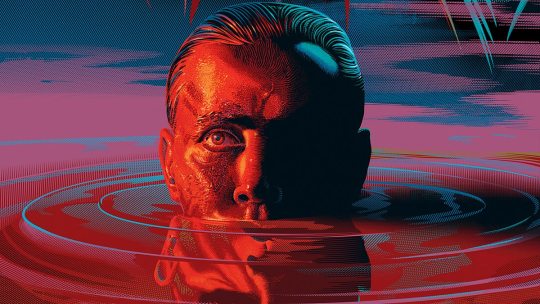
Apocalypse Now is a film directed by the visionary Francis Ford Coppola, a film where all his touches are evident throughout the nearly 2 hour long film. A wild journey throughout a Heart of Darkness inspired Vietnam centered follow. A film that still stands the test of time, still shocking audiences today. Drawing it’s sources and inspiration from Joseph Conrad’s themes of imperialism and moral questioning converted from the Congo imperialism to the contemporary period of post Vietnam War, Francis Coppola set the stage for a film that depicts the moral corruption and ambiguity of the soldiers within the forefront of hell. By adapting Conrad's story to the Vietnam War, Coppola draws parallels between the imperialist ambitions of the 19th century and America's intervention in Vietnam. The film's exploration of the psychological and moral descent of its characters mirrors Conrad's themes of imperialism and the darkness within the human soul.
Upon it’s release Coppola’s film had received widespread critical acclaim along with mixed reception. Critic’s dismissing the film’s lengthy run time and more challenging narrative structure deter the audience.Along with criticisms for it’s contents, glorifying war more than criticizing it. The film doesn’t work enough as an anti-war message and more as a film following a cast of representatives thrown into chaotic situations. In Time magazine when the film first debuted, Frank Rich derided the film as "not so much an epic account of a grueling war as an incongruous, extravagant monument to artistic self-defeat". In comparison to reviews applauding and reveling in it’s philosophical story structure with stunning hallucinogenic visuals that captivate audiences. While Apocalypse Now follows a linear story structure with typical traditional character arcs from war set films. Due to The editing production of Richard Marks along with direction of Francis Ford Coppola and lastly Sound designer Walter Murch. The meticulously crafted film pacing and narrative structure, along with the usage of advanced editing techniques, the film seamlessly integrates surreal and hallucinatory sequences with the film's gritty realism. The incorporation of elements of surrealism and symbolism help to convey the psychological and moral descent of its characters. Dreamlike sequences and symbolic motifs blur the line between reality and illusion, inviting viewers to interpret the film's deeper meanings.
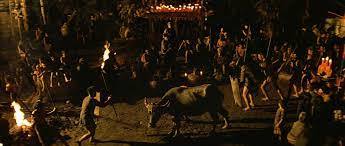
The film contrasts these structures with the utilization of surreal psychedelic visual cinematography, separating the piece from most traditional war films. Garnering a $118,558 upon it’s domestic opening and then eventually accumulating a $104,800 for it’s gross worldwide income. Proving to be a lucrative investment, using it’s $31,500,000 to it’s fullest. having multiple re-releases in theaters and home video formats over the years, further helped bolster its financial success. Now standing as one of the most iconic war films, Apocalypse Now lingers with a legacy of high regard.
Apocalypse Now benefited from advancements in filmmaking technology, allowing Coppola to create epic and visually stunning scenes. Utilizing the skill sets of director of photography Vittorio Storaro. Employing his innovative techniques to capture the film's surreal and epic visuals. With a combination of natural lighting and dynamic camera movements to create a visually striking atmosphere, contributed to the film's immersive portrayal of war. However, these technological feats also came with challenges, such as the logistical difficulties of filming in remote locations and Coppola's infamous struggles with budget overruns and production delays.

implemented in China in 1979, was a government-enforced population control measure aimed at curbing population growth. introduced by the Chinese government as a response to concerns about overpopulation and its potential negative impacts. Due to the enforcement of the policy, varied by region, the penalties for non-compliance would range from fines, loss of social benefits to forced abortions and sterilizations.

The USSR's invasion of Afghanistan, which began on December 24, 1979, was a significant event in both Soviet and Afghan history. The Soviet Union intervened in Afghanistan to support the Marxist People's Democratic Party of Afghanistan government, which was facing increasing opposition from Islamist insurgents and other rebel groups. The conflict contributed to the destabilization of Afghanistan, leading to the rise of the Taliban and years of civil war.
In conclusion, Apocalypse Now a cinematic odyssey transcends the boundaries of traditional war cinema, offering a mesmerizing journey into the heart of darkness. resonates with a raw intensity that lingers long after the credits roll. As we navigate the moral abyss alongside Captain Willard and confront the haunting monologue of Colonel Kurtz. Through its epic scale and visceral imagery. Francis Ford Coppola's masterpiece captivates audiences with its exploration of the human psyche amidst the chaos of war.
6 notes
·
View notes
Text
Week 05.BC.i-ii. Share critical quotations and TEXTUAL resources: Apocalypse Now (1979)
"I love the smell of napalm in the morning"-Lieutenant Colonel Bill Kilgore

A quote that took on a life of it's own becoming a meme often referenced even by those who haven't seen the movie. However the quote runs deeper than what most would think. Napalm smells like victory to Kilgore, the soldiers live in ambivalence to the war they're apart of however.
"Horror and moral terror are your friends. If they are not, then they are enemies to be feared."- Kurtz

In his final moments, Kurtz monologue sends chills down the spine of those who listen. With his words the horror comes from the realization of his morality. That by fighting for a cause you may believe is right, you can still end up committing horrible atrocities in the process.
5 notes
·
View notes
Text
Carrie Film Essay (1976)
By Jacob Christopher
Carrie (1976) is a supernatural horror film directed by Brian De Palma and adapted from Stephen King’s novel of the same name released 2 years prior. The plot follows a highschool girl named Carrie, who discovers she has been born gifted with telekinetic powers. The conflict of the film is that of the abuse Carrie endures by her own mother and school peers. Carrie (1976) is a critically acclaimed film for it’s subject matter of teenage isolation and angst, creatively expressed within a supernatural horror genre. In regards of it’s box office qualities, Carrie (1976) with a budget of 1.8 million USD had managed to garner 33.8 million worldwide. Along with positive reception, such as deemed by Pauline Kael from the same year, “ Carrie is a terrifyingly lyrical thriller. The director, Brian De Palma, has mastered a teasing style- a perverse mixture of comedy and horror and tension”.

(article linked in image above)
The film deals with the subject matter of puberty, sexuality and the criticisms on purity culture. We begin the film following Sissy Spacek who plays the tragic protagonist Carrie, a highschool girl who within the first act of the movie has her first menstruation and left confused by her own body. Followed by a horrific act of bullying, in which the gym full of girls react to Carrie’s plea for help by throwing tampons at her shouting “Plug it up, plug it up, plug it up, plug it”. It’s within this scene we can interpret the metaphors for the horrors of girlhood. Carrie is shamed by the world around her and told contradictions.

A revelation made during my research of the historical events of 1976 is that of the first apple computer launch from the time period. Comparing the time the film had come out along with the release of a product bound to become a common lifestyle necessity, had really put the age of the film into perspective. The perspective makes the film more impressive, especially with the utilization of editing in it’s production. Makes me give the editing and production team more kudos for editing that can be done on phone applications now.

The aesthetic of Carrie has become an influence, with the sequel and two readaptations of the Stephen King novel, both noticeably inspired by the 1976 film. As pillars of the popularity of the medium. Other forms of inspiration from Carrie are the 70s style of fashion. The film has an eerie tone, often through the dialogue deliveries of the characters and the predicaments Carrie has to handle when treated in distasteful manners throughout the film. Suspense is often built up through the interactions between Carrie and everyone else, culminating into moments of alarm for when Carrie’s patience is tempted. What gives Carrie (1976) it’s edge is the choice to be blatant with their audience. To not hide what is gonna happen, the audience feels sick and grapples with their anxieties, absolutely helpless to be bystanding victims. The age of the film’s grainy quality actually has fermented gracefully into a dark gradient staining the screen, adding to the already thick atmosphere. There is great emphasis on the distinct cinematographic style of De Palma. Using split screens for dramatic scenes and the dream like sequences experienced by Carrie.
The qualities of Carrie (1976) can be interpreted as both conventional and unconventional depending on what factors matter more to the critic. The movie incorporates many expected tropes and tactics used in it’s horror genre. Exemplified through it’s usage of the highschool setting, jump scares of sudden loud music and snappy movements. However what makes Carrie (1976) an outlier from it’s contemporaries is the subject matter displayed. Touching upon and criticizing religious fanaticism, exemplified through Carrie’s mother’s overbearing nature and blind faith to her Christian belief. Along with the themes of adolescence and the struggles of young women. If it were to come to my personal opinion, I would deem Carrie (1976) to be more so unconventional than conventional due to it’s subject matter’s taboo nature. Overall Carrie has earned it's cult classic status through it's unconventional thematic and great reception to affirm it's reputation.
7 notes
·
View notes
Text
Week 04.BC.i-ii. Share critical quotations and TEXTUAL resources
Margaret: [referring to Carrie's prom gown] Red. I might have known it would be red.
Carrie: It's pink, Mama.
[presenting her corsage]
Carrie: Look what Tommy gave me, Mama. Aren't they beautiful?
Margaret White: I can see your dirty pillows. Everyone will.
Carrie: Breasts, Mama. They're called breasts, and every woman has them.

This quoted interaction between Carrie and her mother captures the themes of womanhood and the sexual oppression that comes with being a woman.
Carrie: [about Tommy's pollution poem] it's beautiful.
Mr.Fromm: Carrie White! Beautiful, beautiful
[sarcastically joyful]
Mr.Fromm: BEAUTIFUL! Oh beautiful for spacious skies, for amber waves of grain, is that the kind of beautiful you mean, Carrie?
[the whole class laughs]

This scene within the film exposes the treatment Carrie receives from her peers and even mentors. Giving a sincere response to the poem instead of looking for criticism, she is ridiculed.
3 notes
·
View notes
Text
Head Film Essay (1968)
Directed by Bob Rafelson and Jack Nicholson
Written by Jacob Christopher
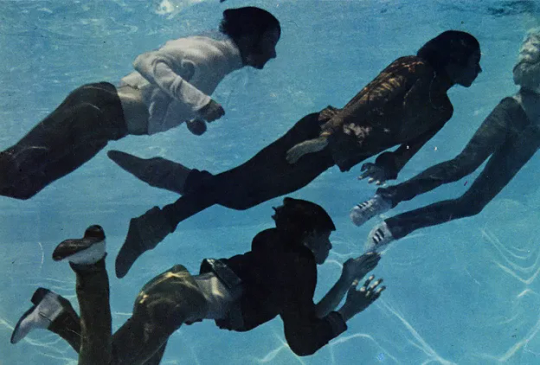
“Of course Head is an utterly and totally fragmented film. Among other reasons for making it was that I thought I would never get to make another movie, so I might as well make 50 to start out with and put them all in the same feature." - Bob Rafelson
Head is a fun film, not because of it's plot, but it's absence of any sensical story direction at all. Released with it's corresponding album, the film utilizes the talents of the boy band The Monkees traversing through an obstacle of hijinks on their movie set, searching for sense trapped in a surrealist inspired story progression. Taking a satirical tongue and cheek approach to it's humor and messaging. Expressed through it's dialogue and formalistic style of cinematography, often the point is played vaguely and subtly due to it's delivery. Exemplified as a pariah for the time, The Monkees, Hollywood TV's answer to The Beetles. Were a Family TV show tied with music production, blurring the lines between actors and musicians. From mid-sixties to the year of 1967, The Monkees group of boys, Micky Dolenz, Peter Tork, Davy Jones, Michael Nesmith, soared towards the top of American notoriety and attention, before the inevitable downfall that waits for most manufactured trends.
In a glory of self destruction, the creator of The Monkees Bob Rafelson and the boys of the band had set to create a film as if it were their last opportunity to throw every editing tool and story beat, accumulating into a fun mess of a send off for the band. Ultimately flopping at the box office in extortionary fashion, only garnering $16,111 in the box office. The ticket sales in comparison to it's budget of $750,000 clearly show the disparity of the investment's outcome.
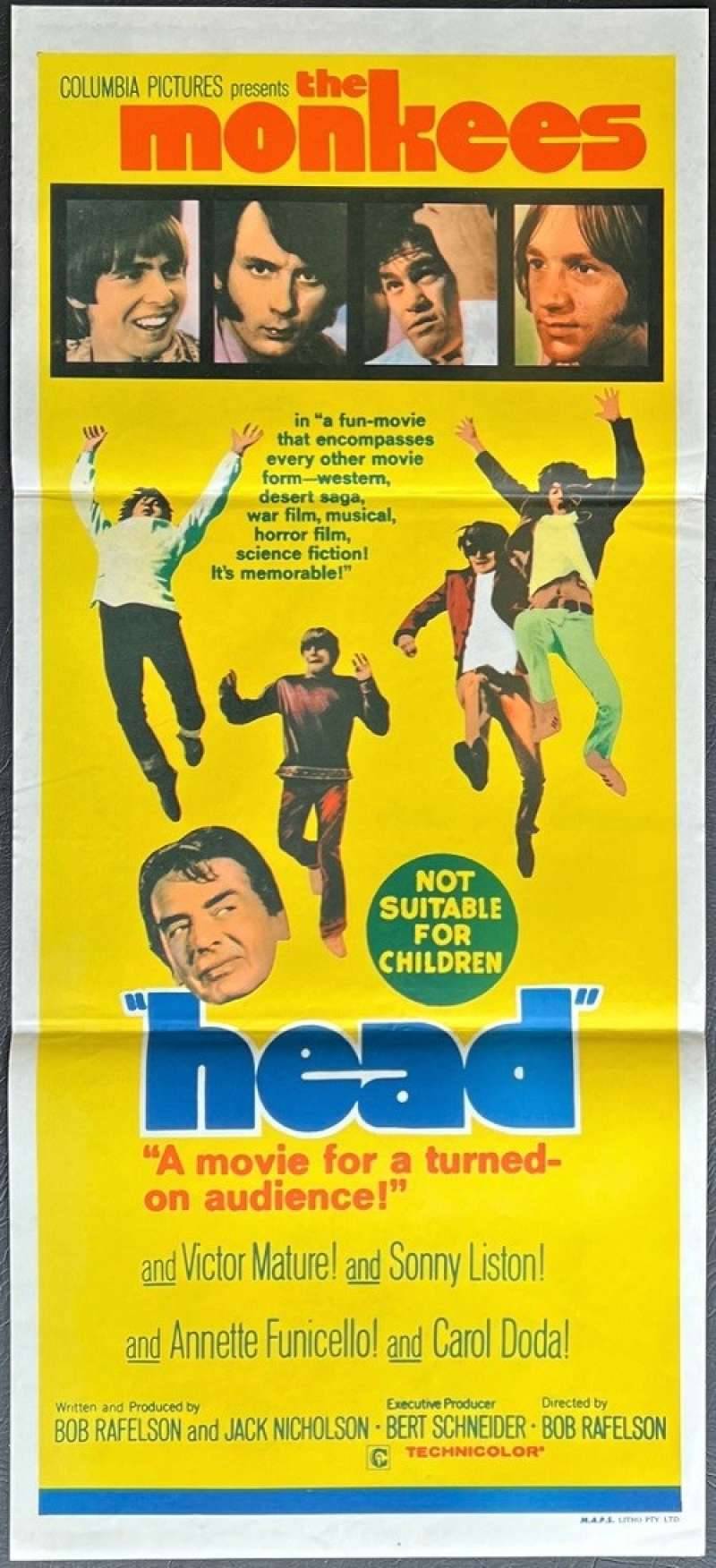
Reception during the airing of the movie was very mixed if not mostly negative, To quote a review of the time by Renata Alder of The New York Times: Head "might be a film to see if you have been smoking grass, or if you like to scream at the Monkees, or if you are interested in what interests drifting heads and hysterical high-school girls." Alienating their audience of families due to the un-child friendly subject matters shown, while also unable to reach an adult audience due to the already concrete notions of The Monkees tween image. Despite the poor reception of the film upon release a cult following for the film had managed to be birthed from the film's obscurity and ambitious story telling.
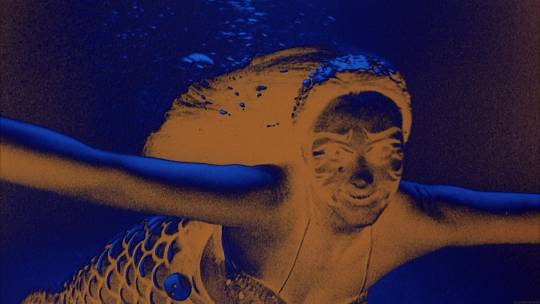
The film is the lease bit conventional in everything it does, exemplified from it's camera cuts, video editing and especially the lack of coherent story progression. In the beginning sequences of the movie Mickey Dolenz jumps from a bridge and into the water, where psychedelics sequences of inverted colors and high contrasting visuals of mermaids swimming around his drowning body, transitioning backwards in time to the band being kissed by a woman, who rates all of the members to be about the same quality of partner. Where things become harder to describe is the plot of the film, or as many put it, the lack of a plot at all. However there is more to be dissected than just face value, or even what the film just shows you at all. Most of what makes Head (1968) interesting isn't just the summer of love aesthetic brought by the hippie movement, but also the martyr philosophy the the band and directors try to make of the novelty.
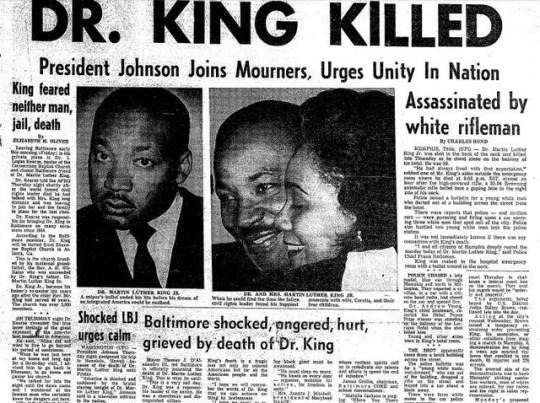
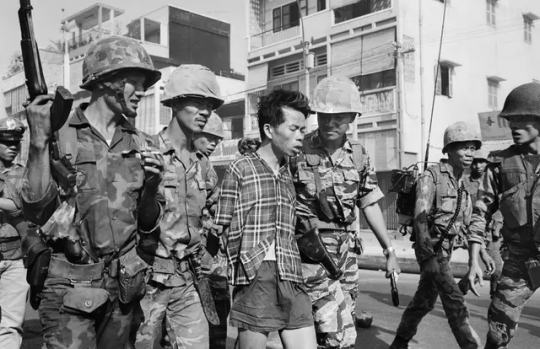
(Top Image: Article of MLK's assassination)
(Bottom Image: Moments before the execution of Nguyễn Văn Lém)
To emphasize the tumultuous times of the late sixties, Martin Luther King had unfortunately been assassinated in Memphis, and war waged furious. The scene that had staked itself into my attention, forcing me to see this film as something more than just zany 60s sitcom antics. Is that of the execution of Nguyễn Văn Lém, a captive of south Vietnamese troops. A polarizing scene to include, especially regarding The Monkees previous audience of children and family orientated television. For many it can be deemed as none less than shock, but also play part of the messaging of the time. 1968, the Vietnam War curtained prevalent over many lives. In usage of the execution, the scene plays also as commentary on what America's television programming hid from it's audience, The Monkees used as a blanket of blissful ignorance, but not anymore. Unappreciated for it's time, Head (1968) has aged into a relic of the past to be appreciated by a newer audience in retrospective perspective.
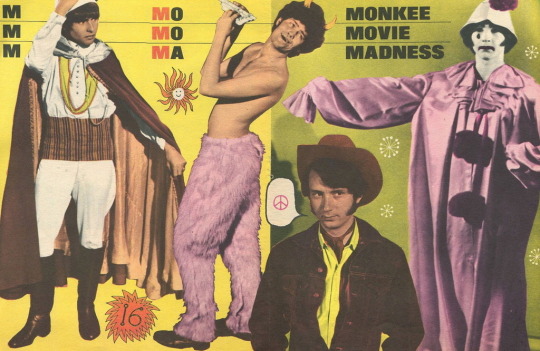
4 notes
·
View notes
Text
Week 3 Critical Quotes & Visual Resources: Head (1968)
By Jacob Christopher
"[chanting in unison] Hey, hey, we are The Monkees, to that we all agree. A manufactured image with no philosophies."

One of the biggest aspects of the film that had stood out to me was the outright telling of the plot's main point, but it being distorted by the rampaging pace of the film. This quote is very on the nose, poking fun at their stardom in Hollywood TV.
"We were talking with the Master regarding the nature of conceptual reality. Psychologically speaking, the human mind or brain or whatever, is almost incapable of distinguishing between the real and the vividly imagined experience. Sound and film and music and radio. Even these manipulative experiences are received more or less directly and uninterpretive by the mind. They are cataloged and recorded and either acted upon directly, or stored in the memory, or both. Now this process, unless we pay it tremendous attention, begins to separate us from the reality of the now. Am I being clear? For we must allow the reality of the now to just happen, as it happens. Observe and act with clarity. For where there is clarity, there is no choice. And where there is choice, there is misery. But then, why should I speak, since I know nothing?"

An extraordinary lengthy quote, yes. However the most thesis heavy piece of dialogue expressed by a swami, and later retorted by Peter in the film. Due to the quote's drawn out structure, the message is transformed more so into a satirical poke at a clear explanation than actually one.
4 notes
·
View notes
Text
A Bout De Souffle Film Essay (1960)
By Jacob Christopher

Watching A Bout De Souffle is like listening to the romanticized memories of our elders, a glimpse into their own youth and a comparison of them and us. Jean- Luc Godard has created a film that wants you to know that it is a film. Still discussed and dissected today with the backdrop of the city of Paris, the story is filled with experimental cinematography and an abstract sense of storytelling, this film credited with being a catalyst of The French New Wave, has stood its test of time as a pivotal history of film.
The beginning of the film perfectly serves it’s thesis to the audience, where we open with Michel who can be viewed as a satire of an American gangster, further parodied when mimicking a Humphrey Bogart onscreen mannerism of wiping his lip. Where he then steals an American automobile owned by an American Military officer which leads to his possession of a revolver found in the glove box. Running a redlight Michel is then chased by the cops turning into a shootout with Michel killing an officer.

It is here where the film speaks subtly, the scene of Michel killing the policeman took place within 10 seconds and 5 camera shots used steals the attention away from Michel, he is not meant to be seen as formidable. In the cinematography of the 5 shots the persons are framed in close up shots, obscuring the scene and dissipating any satisfaction. Yes Godard could have used more conventional wide angle shots for this scene to give watchers more context, however the scene was not meant to film the death of the police officer, but to rob Michel of his spotlight. The Film criticizes Michel, Later in the story Michel stands face in front of the movie poster of Humphrey Bogart with the camera panning back and forth from the two faces, highlighting the wants of Michel.
The film has an abstract style, where conversations turn into monologues, cinematography is subverted and the main characters are frustrating. “The Americans are real and natural. But this attitude means something over there. We in France must find something that means something—find the French attitude as they have found the American attitude", a quote by Godard that I can't help but see in this film. Playing almost like Godard’s thoughts on American Noir films and how he could do things differently. With the character introduction of Michel playing more as an interview with the actor breaking the fourth wall and conversing with the audience. The film progresses very mundanely between the two leads despite the dire circumstances of Michel on the run from the law, the film takes its time with Michel and Patricia’s relationship and how it develops. A Bout De Souffle plays as if one of the characters are telling it.
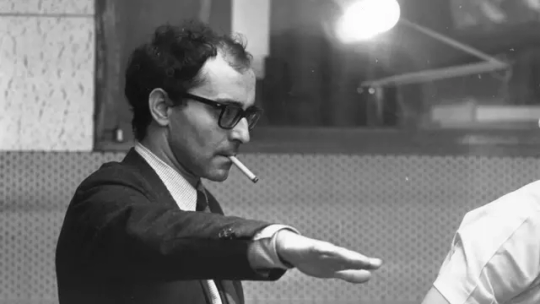
image of Jean Luc Godard
The film is unconventional without a doubt, and even for today it is still. A Bout De Souffle was a movie made with the budget of 400,000 FRF which is equivalent to 120,000 USD, Godard’ disdain for large studio productions, many elements of the cinematography add to the realism of the film. With the previously stated exaggerated close up of characters serving as only a singular example, many more experimental cinematic choices are present. Throughout the film you will see the usage of unnecessary jump cuts, most would consider this as an error on the production's hand however these snappy cuts help aid to the realism Godard wants to implement, reminding the audience that they are watching a film. With such a small budget the crew had to become creative with their filming. Too expensive a dolly could not be afforded for the long walking shots, so a wheel chair was used instead.
Just right before the independent film’s release it had won the annual Jean Vigo Prize, and then after release the film was praised and astonished as an immediate success. Establishing the impact of the French New Wave and redefining what old cinema and new cinema had meant. Now 64 years later the film is viewed in classes and Godard has gone on to inspire the likes of other directors such as Tarantino. With a budget of 120,000USD the revenue came back with great return. Domestic box office numbers soared above to about $425,000 USD. To put this into more perspective, from the year 1960, $120,000 and $425,000 have grown to $1,266,210.81 and $4,484,496.62 for the year of 2024.
At the end of A Bout De Souffle I was left knowing I’ve seen a good film, the quirks and elements of intrigue litter the movie. It’s a film I would recommend being seen at least once, for it is a film that should be watched knowing it is a film. From an ex film critic to a man filming his criticisms I end my essay with a quote from Godard. "I write essays in the form of novels, or novels in the form of essays. I'm still as much of a critic as I ever was during the time of 'Cahiers du Cinema.' The only difference is that instead of writing criticism, I now film it."
6 notes
·
View notes
Text
Week 2: Critical Quotations & Visual Evidence - A Bout De Souffle
by Jacob Christopher
“I don’t know if I’m not happy because I’m not free, or if I’m not free because I’m not happy”

On a lunch date Patricia laments this quote, the uncertainty of the quote perfectly encapsulates the mindset of the character. As well as arouses the audience to think about their own circumstances in the confines of Patricia's words.
“Between grief and nothing, I’d choose grief.”

Words from American writer William Faulkner quoted by the female lead Patricia to her partner Michel. Often times is it easier to quote someone else to express convoluted thoughts and emotions we cannot decipher as well. The quote not only lets us know what sort of person Michel is when he answers, but also who Patricia is for asking.
3 notes
·
View notes
Text
The Green Knight Film Essay(2021)
by Jacob Christopher
The movie I chose to rewatch for week one of class is The Green Knight (2021) directed by David Lowrey, a cinematic readaptation of the 14th century poem of the Arthurian tale Sir Gawain and the Green Knight. The story follows that of the nephew of King Arthur, Sir Gawain played by Dev Patel, and his quest for honor in order to please his lineage. Accepting the challenge of the mysterious Green Knight on Christmas day to strike him with a blow, on the condition that Gawain must seek him out a year later to receive an equal blow in return. The film explores themes of honor, destiny, and mortality as Gawain embarks on a perilous journey filled with encounters that test his character and courage. It's praised for its stunning visuals, atmospheric storytelling, and thought-provoking exploration of the human condition. The impact left on me was more so the curiosity left from the end of the film, left wondering what it was that captivated my attention.

The indie film is a financial success considering the budget of 15 million compared to the grossed 20 million worldwide and 3 million in the home market. Arguments can be made looking at the box office opening night of just under 7 million isn't considered an impressive metric. However looking at the historical context, for an indie movie to be released during the covid-19 pandemic many restrictions for public safety were still implemented. To add inclination for people to view the film the production studio known as A24 acts as a seal of theatrical approval for audiences. Despite being based on a pre-established text, the obscurity of it’s age doesn’t exactly tempt the audience with it’s popularity. What differentiates The Green Knight from prior medieval films is the usage of it’s psychological horror and abstract cinematography to add a sense of surrealism to it’s story. A24 before releasing the film released a video on YouTube titled as An Oral History of the Green Knight to engage audiences as well as act as a guide for background and historical context for the film. The critical response for the film has remained the same with the film’s popularity peaking during it’s theater release.

Link to Trends
Only adding to it’s strength, the unconventionality of the film drew in many to witness and marvel at the almost confusing film. Rather than focusing solely on chivalry and heroism, the film delves into themes of mortality, honor, and the nature of destiny, offering a more introspective take on the Arthurian legend. Combined with director David Lowery's visual storytelling, blending elements of fantasy and realism, creating a dreamlike atmosphere that sets it apart from typical historical dramas. Taking a non-linear approach to storytelling, often meandering through dream sequences and nonlinear timelines for a muddied lens of fantasy and realism it challenges that of conventional narrative structures. Instead embracing ambiguity and symbolism, leaving much more to be open to interpretation. The meaning of certain events and characters is left intentionally vague to invitie viewers to engage in deeper analysis. This movie has it all, etching itself into the A24 vault as arguably one of their most fascinating films.
My first viewing of this film I was puzzled and amused by the creativity and storytelling capabilities expressed. I watched half of it, rewinded it, went to bed and watched the rest in the morning with my roommate with bowls of cereal in hand. By the ending scene I was left in awe of how well written it was, and when the credits had started rolling the two of us sat in silence for what felt like minutes. Before my rewatching of the film once more I had done more research on the intricaciesof the film and the Arthurian poem of Sir Gawian and the Green Knight. With one of the bigger questions of the purpose and symbolism of the Green Knight himself being answered by one of the commonly agreed on interpretaions. Being the Green Knight is an embodiment of Nature and the cycle of life itself, and the actions Gawian takes againt the Green Knight exposes his human nature and all of it’s blemishes. The poem is a much more cheery tale of bravery and the heroics of what is expected of a knight.
The quote I chose to embody the film is by Essel, a woman from the lower class of society as well as the lover of Gawain, asking Gawain before his venture to find the Green Knight and seek his fate, “Why Greatness? Why is goodness not enough?” It is within this dialogue we find the message of the film. What is honor if not an excuse to run from your own humanity?
youtube
youtube
2 notes
·
View notes